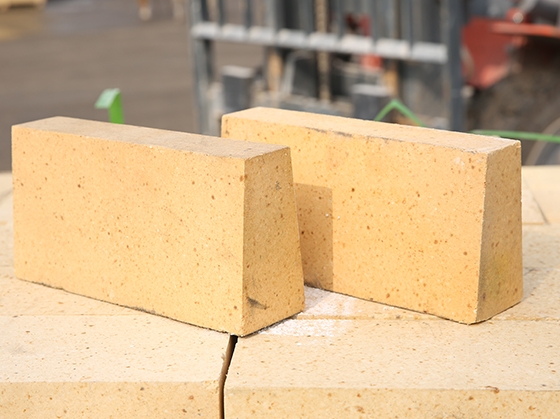- 14
- Sep
T38 high alumina brick (knife type)
T38 high alumina brick (knife type)

T38, t39 high alumina bricks are the main components of high alumina bauxite; sillimanite group minerals (including kyanite, andalusite, sillimanite, etc.); synthetic raw materials, such as industrial alumina, synthetic mullite, electricity Fused corundum and so on. China’s high alumina banadium is rich in resources and excellent in texture. The production areas are mainly distributed in Shanxi, Henan, Hebei, Guizhou, Shandong and other places. The high alumina bauxite produced is mainly a mixture of bauxite (α-Al2O3·H2O) and kaolinite.
High alumina brick is a neutral refractory material with alumina content not less than 60%. It is formed and calcined from bauxite or other raw materials with high alumina content. Our factory produces high alumina bricks with high thermal stability and refractoriness above 1700℃. Good slag resistance is mainly used for the lining of blast furnaces, hot blast furnaces, electric furnace roofs, blast furnaces, reverberatory furnaces, and rotary kilns. The main products of our factory are general high-alumina bricks (ie T-head bricks) T-3 T38 T39 T19 T20 T23 T7 T52, special-shaped high-alumina bricks, blast furnace refractory bricks G1 G2 G3 G4 G5 G6 furnace door arch corner bricks and other high-quality refractory bricks .
1. Refractoriness: The refractoriness of t38 and t39 high alumina bricks is higher than that of clay bricks and semi-silica bricks, reaching 1750~1790℃, which belong to advanced refractory materials.
2. Load softening temperature: Because high aluminum products have high Al2O3, less impurities, and less fusible glass, the load softening temperature is higher than clay bricks and high alumina bricks, but because mullite crystals do not form a network structure, The softening temperature under load is still not as high as that of silica bricks.
3. Slag resistance: high alumina bricks contain more Al2O3, which is close to neutral refractory materials, and can resist the erosion of acidic slag and alkaline slag. Since it contains SiO2, the ability to resist alkaline slag is better than that of acidic slag. Weaker. The production process of high alumina bricks and multi-clinker clay bricks are similar. The difference is that the proportion of clinker in the ingredients is higher, which can be as high as 90-95%. The clinker needs to be sorted and sieved to remove iron before crushing, and the firing temperature Higher, such as Ⅰ, Ⅱ high alumina bricks are generally 1500~1600℃ when they are fired in a tunnel kiln. Production practice in China has proved that before crushing, high-alumina clinker is strictly selected and classified, and stored in tiers. The use of bauxite clinker and combined clay fine grinding method can improve product quality. Mainly used for building blast furnaces, hot blast furnaces, and electric furnace roofs. , Blast furnace, reverberatory furnace, rotary kiln lining, etc.
High-alumina refractory brick, that is, an aluminum silicate refractory material with an alumina content of more than 48%. It is formed and calcined from bauxite or other raw materials with high alumina content. High thermal stability, refractoriness above 1770℃. The slag resistance is better.
Usually divided into four categories:
Class I: Al2O3 content ≥75%;
Class Ⅱ: Al2O3 content 60%~75%;
Class Ⅲ: Al2O3 content is 48%~60%;
Special class: AL2O3 content ≥80%.
It can also be classified according to its mineral composition, generally divided into five categories: low mullite (sillimanite), mullite, mullite-corundum, corundum-mullite and corundum.
Physical and chemical indicators:
| Rank/Index | High alumina brick | Secondary high alumina brick | Three-level high alumina brick | Super high alumina brick |
| LZ-75 | LZ-65 | LZ-55 | LZ-80 | |
| AL203 ≧ | 75 | 65 | 55 | 80 |
| Fe203% | 2.5 | 2.5 | 2.6 | 2.0 |
| Mật độ khối lượng lớn g / cm2 | 2.5 | 2.4 | 2.2 | 2.7 |
| Compressive strength at room temperature MPa> | 70 | 60 | 50 | 80 |
| Load softening temperature °C | 1520 | 1480 | 1420 | 1530 |
| Refractoriness °C> | 1790 | 1770 | 1770 | 1790 |
| Apparent porosity% < | 24 | 24 | 26 | 22 |
| Heating permanent line change rate% | -0.3 | -0.4 | -0.4 | -0.2 |
